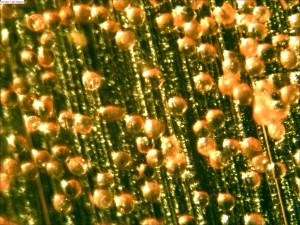Community Intelligence: Reflecting Culture with Convolutional Neural Networks (CNNs)
Industry: Civic Innovation
Challenge: How can we co-create intelligent products and experiences in our city that speak to culture?
Goal
Our goal in this project is to introduce thinking about supervised learning, unsupervised learning, convolutional neural networks, and general concepts of AI to community members by exploring their own thinking around culture. This year-long research project provides multiple entry points for community engagement and an introduction to AI Design.
About
Co-creating data for reflector devices.
As autonomous cars enter our cities, significant changes must be made to our city infrastructures. We are exploring how one new device, a reflector, could serve as a distributor of information for individuals moving around the city (in autonomous cars, walking, buses, etc). We believe that these objects for infrastructure should be built not only to support multiple modes of transportation within a city, but also as a tool to reflect culture. We were inspired by a research project from Sentient+ and RISE Viktoria [1], which proposed a combi-reflector as detectable object, to enable autonomous driving. As this combi-reflector is visible to humans, radar and lidar, we believe the combi-reflector could additionally work to reflect culture to people walking, biking, in cars or other types of transportation.
In our co-making we start by asking the question - What might a co-design cultural combi-reflector look like (images above)?
Using AI In Community Research
We co-create categories for culturally relevant information and then use python/tensorflow/CIFAR to recognize images and classify them.
We design the combi-reflector as a “receptive field” for culturally relevant information.
AI Design Research Process
Image collection & identification of culturally important information
Physically making cultural combi-reflectors
Making a “Cultural Convolutional Neural Network” using reflectors as the receptive fields
Research & Design:
In the first stage of this research, communities work together to identify culturally relevant images, and images that reflect concepts of culturally important information. We will then use python, tensorflow (+ CIFAR), to recognize images and classify them based on our community defined categories.
The design of the reflectors which can be placed anywhere (on people, in surveillance cameras, cars, buildings) as well as the design of the CNN readers (which can also be used anywhere). The material design of the reflectors is inspired by cultural images, sound and forms, along with the light and design of the microbeads used to design the reflectors, as seen in the light and space artist from the 1960's Mary Corse. We used microbeads to explore how different types of material filters can change data experiences. In a location there might be one or many reflectors.
We imagine the reflectors to be the receptive fields of a specific cultural area of interest. This cultural combi-reflector could present this receptive field to be read in conjunction with buildings in a location, streets, landscapes (this can be read across scale).
Community Entry Points
There are multiple entry points for the community research, from photography, to discussions about culturally important and relevant info, to more technical questions around which databases and programming languages to prototype with. Our research/making will include theme identification, photography and physical making of reflectors.
We used our AI Design model to engage in AI Design for defining culturally relevant features.
AI Design Approach
Our AI Design Approach: Context x Code x Material = Experience x Form
Context: Intelligence defined by culture and subculture
Code: Tensorflow, python
Material: Photos, CIFAR (database), retroreflectors, cardboard, aluminum foil, reflective cloth
We are connecting with culture by designing infrastructure objects. The reflectors in a location can change form or combine with more reflectors.
References
[1]. Voronov, Hulten, Wedlin, Englund. Radar reflecting pavement markers for vehicle automation. Swedish Transport Administration (Trafikverket) Report TRV 2015/97856, January 2016 (fulltext link).
Note: Special thanks Cathy Hillman for her use of the word “convolve”, to Kate Mayerson for mentioning the research that emerged from "Radar reflecting pavement markers for vehicle automation" and Heidi Gaudet for pulling the article.






